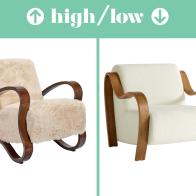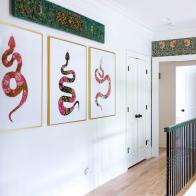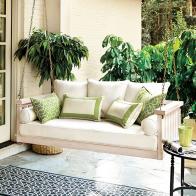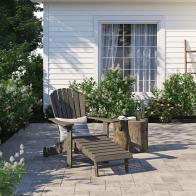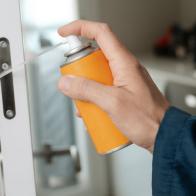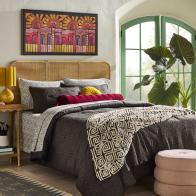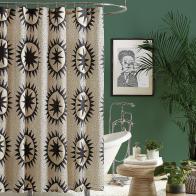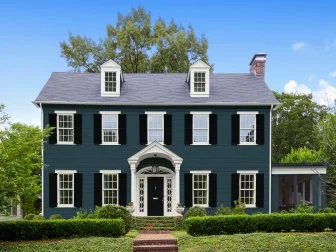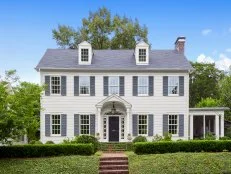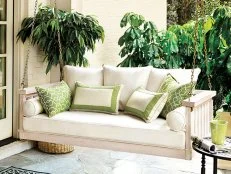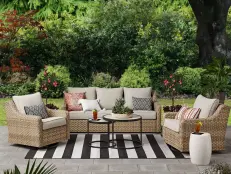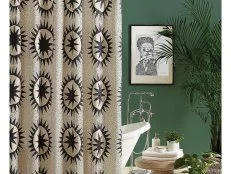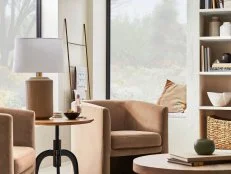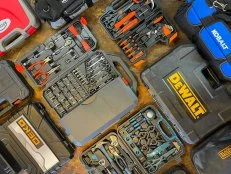The Ultimate Exterior Siding Buyer's Guide
From protecting you and your family from the weather to adding a cohesive look to your house, a lot is riding on your siding choice.
Second only to maybe roofing, siding is the hardest working element on your house. The sides of a home not only protect its inhabitants from weather, they also play a huge part in defining your home’s architectural style. What is a Tudor home without stucco or a classic New England coastal Cape Cod home without cedar shingles?

Laurey Glenn
“From a functional point of view, siding gives you protection,” says architect Amy A. Alper. “From an architectural point of view, there's an interest now in using a variety of materials to highlight special features on a home. For example, using stone or Western red cedar to highlight an entry.”
Unlike roofing, siding is more approachable. You can see it up close and touch it on a neighbor's house, and it can be easier to find displayed in home centers — which is helpful because it’s not just style on the line here. Your siding choice can make a huge impact on the maintenance you do (or pay someone else to do).
When Choosing Siding, Consider the Following:
- Is the material available in a variety of colors and styles that complement your home architecture?
- If you’re picking a new material, are the contractors in your area able to install it?
- Does the material meet the fire codes in your local area?
- Are there special installation and maintenance issues to consider?
- Does this material offer good performance in extreme weather conditions that are common in your area?
- What is the cost and lifespan of the siding material?
- What is the product’s warranty and is it transferable if you sell your house?
The answers to these questions can help you narrow down the field of possible siding candidates. Re-siding a home is a big job, and it can often be difficult to get clear numbers about the project’s cost because contractors typically provide a price that includes the materials and the labor. You should always find out what percentage of the quote is for the siding itself and what goes into the labor portion — including asking if things like providing a dumpster and removal are included. You might have to pay to have the existing siding removed first, as is often the case when adding a new roof.
In a few instances, you can re-side over the existing cladding. For example, if you want to add wood shingles over existing wood clapboards. If the home has asbestos siding, it’s usually faster and less expensive to cover it with the new siding rather than removing it. As a general rule of thumb expect to pay about $10 per square foot for budget-friendly vinyl to about $50 for stone.
Picking a New Siding Color
While picking a new siding can be intimidating, there are several cues you can use to help guide you to the best material and color. Start with the roof, which often is the other big swath of color on a house. Unless you’re planning to reroof along with re-siding, it pays to consider that a roof can be in place for about 30 years.
“The first question I always ask is what feelings do you want your house to have?” says Debra Kling, a color consultant. “Do you want it to be sort of classic? Stately? Edgy? Cottagey? And once you define that feeling, then I think it becomes very helpful when picking the colors because now your world of choices becomes much smaller.” Debra’s advice is to generally keep the color of the home’s siding at the same temperature as the roof. “Repetition is always an element in successful design.”
16 Exterior Color Combos for Popular House Styles 17 Photos
HGTV Magazine tested different color palettes on four common architectural styles — so you don't have to. Here are our favorite pairings.
Cruising around your neighborhood is usually an easy way to see homes with a similar architectural style to yours in different siding materials and colors — and hopefully with a similar roof color to yours. Just about every siding manufacturer offers a virtual try-on where you upload a photo of your house and swap in different siding materials and colors, but those can’t replicate the look of the siding in person, especially when the light changes during the day. “It's interesting because even stark white houses often look and feel warmer because of the sun,” Debra says.
68 Inviting Home Exterior Color Palettes 68 Photos
From classic to bold, showcase your style with inspiration from these exterior paint color schemes that offer serious curb appeal.
The right choice can often be a subtle tweak instead of a daring risk with color. “You do want to see some contrast generally, between the body of the house and the roof. When people say, 'I want that wow factor,' what they’re really talking about is contrast,” says Debra.
The style of a home can also help simplify color choices. For example, Colonial homes are usually a single color spread over one kind of siding, like a blue-gray clapboard. Victorian homes can have two or more different sidings, each in a different color. It can be useful to understand which siding materials can be painted after installation, which can help you refresh the color of the house to coincide with a new roof or windows. Many siding options can be painted, including vinyl, stucco and wood that has been previously painted. (Paint might not bond to wood siding that has been previously stained.) In most cases painting over any material is going to increase the maintenance required to keep it looking good.
Types of Siding
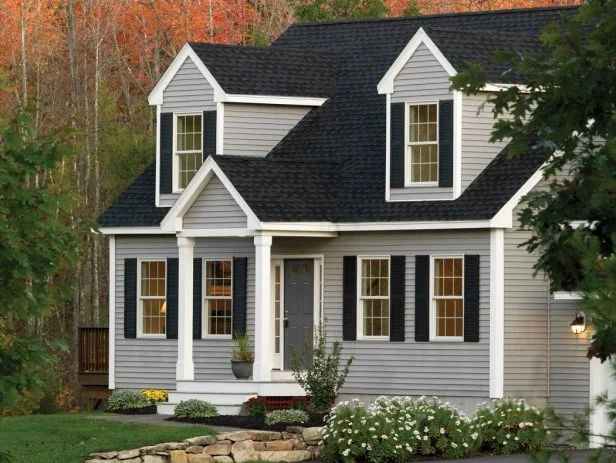
Vinyl
Budget-friendly, versatile and easy-to-maintain, vinyl siding remains one of the most popular siding choices in the United States. While some design professionals and homeowners are turned off by the “plastic look” of some vinyl siding products, the variety of colors and styles available helps explain this siding’s popularity.
Pros: Well known for its simple care, vinyl is easy to keep clean with a brush or pressure washer, and scratches aren’t as noticeable. If you haven’t shopped for vinyl siding in a while, the category now comes in a massive range of styles and textures that mimic everything from wood shingles to brick and stone — some more faithfully than others. Nationally, vinyl is one of the most commonly installed siding materials, so finding a quality contractor isn’t usually an issue. Unlike wood, vinyl isn’t susceptible to rotting or insect damage, and some options come with an insulating foam backing to help add some R-2 to R-6 to the building.
Cons: On less expensive vinyl products the criticism that it looks like plastic is still valid. Over time, vinyl can fade when exposed to the sun and, in some cases, can crack in extremely cold temperatures.
House styles: Because vinyl is molded to mimic a wide range of materials, it works with many architectural styles, from shingle-clad Cape Cod homes to the vertical board and batten style of a modern farmhouse.
Cost and lifespan: The prices range from $3-$12 per square foot. Warranties for vinyl can range from 50 to a limited lifetime for more expensive products.

Christopher Luker
Wood
Commonly used for bungalows, Cape Cod and cottage exteriors, wood siding offers a rich look and durability, when maintained properly. If you are attracted to this look keep in mind that it requires periodic maintenance (chalking and painting or staining to prevent weather damage) and is susceptible to insect and rodent attacks.
Pros: For traditionalists, architectural review boards and historic housing commissions, wood siding is still the best choice for crisp detail and authenticity. Available primarily in shingles or rougher textured shakes, along with smooth or rough clapboards, wood siding comes in a few different species, like white cedar, red cedar, Alaskan yellow cedar and pine. The better-quality products are stained on all sides at the factory, which adds to the cost, but speeds up installation and leads to less warping. Vertical wood siding, the original board and batten, is a classic look for barns that has made its way onto houses too.
Cons: Wood possibly requires the most maintenance, since homeowners need to stain or paint it periodically, and keep an eye out for damage from insects and water. It’s also some of the most expensive siding to purchase. Since it can be a somewhat regional material, access to a qualified installer might not be as vast.
House styles: Wood fits a wide range of traditional and Colonial-style architecture — right up to post-war, and later, suburban homes. It’s the right choice for coastal climates where the naturally rot-resistant cedar can handle the seaside environment.
Cost and lifespan: The prices range from $5-$15 per square foot. Warranties for wood can often rely on how it’s coated, so it varies widely. A cedar shake might have a warranty that protects against physical damage to the wood and the finish for 10 years with one coat of a solid body stain and 25 years for two coats.
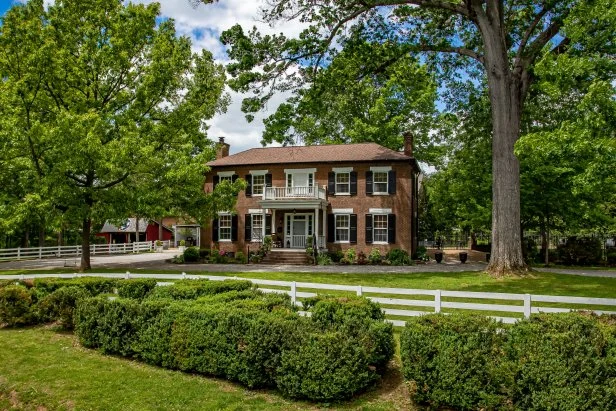
Brick and Brick Veneer
Fired clay used to be the only option when it came to bricks, but now — especially for walls — you’re likely to find cementitious options. Both come in a range of colors and sizes and are some of the most durable siding options around.
Pros: Top-notch durability and resistance to fire and insects are high on the list of pros for brick. Properly installed brick siding should last decades (if not longer) with very little maintenance beyond cleaning occasional moss build-up. Bricks come in a range of colors — from bright reds to browns and beiges — that provide a range of options. If a home was not designed to have bricks, which usually means a brick shelf is in place, another option is using thin brick veneers. These provide the look and feel of real clay or cementitious brick with a faster installation.
Cons: The price of low maintenance and durability is cost, as brick can be some of the most expensive siding to install. It requires a skilled mason, which might not always be easy to come by depending on where you live. Some siding contractors might only be accustomed to adding brick veneer siding.
House Styles: Brick is commonly found on Colonial, Tudor and English cottage exteriors, providing a beautiful look that has been used for hundreds of years and has stood the test of time. Thin brick veneers can be used to dress up an exposed concrete foundation on many homes.
Cost and lifespan: The prices range from $7-$30 per square foot. Bricks can have warranties of 50 years to lifetime. When brick siding fails, it’s not usually the bricks themselves but rather the installation, which makes it vital to find a contractor who knows how to use clay or cementitious brick.
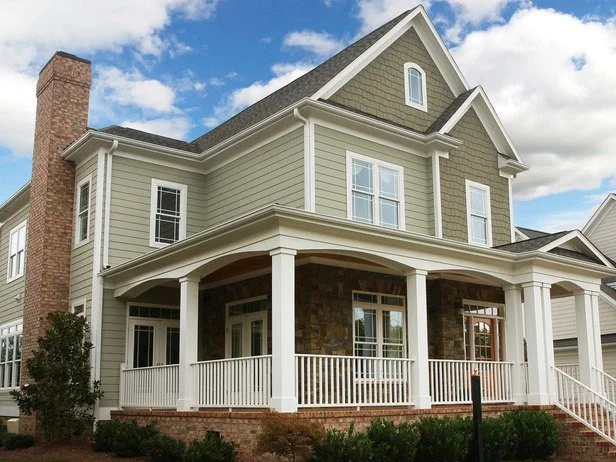
James Hardie
Fiber Cement
Just as vinyl became a lighter, easier-to-install version of wood siding, fiber cement — a composite made of wood pulp, Portland cement and fly ash — is growing to take on a whole range of materials and looks. It's gaining popularity across the country for its blend of easy installation and durability.
Pros: It has similar resistance to fire, insect damage and rot that real stone or brick offers, but it is a lightweight product that is easier for siding contractors to install. Fiber cement can, like vinyl, replicate a wide range of painted materials, from wood shingles and clapboards to vertical siding panels. The product holds onto paint well and is usually shipped from the factory already coated. Repainting it is less fussy than having to scrape away the previous coating from wood siding. Unlike a lot of siding options, fiber cement can be a complete siding package that includes details like trim.
Cons: While fiber cement siding is lighter than real stone or brick, it is still heavier than vinyl and brittle, which can cause it to snap with mishandling. Installing it correctly may require specialty tools so contractors remain safe and avoid breathing in the dust.
House styles: Because it is extruded to mimic a wide range of materials, it works with many architectural styles. It’s a great choice in areas that are prone to wildfires (where building codes might mandate it) and in coastal communities that see a lot of humid, salty air.
Cost and lifespan: The prices range from $5-$14 per square foot. It’s typical for fiber cement, painted at the factory, to have a 15 to 30-year warranty against the coating chipping, peeling or fading.
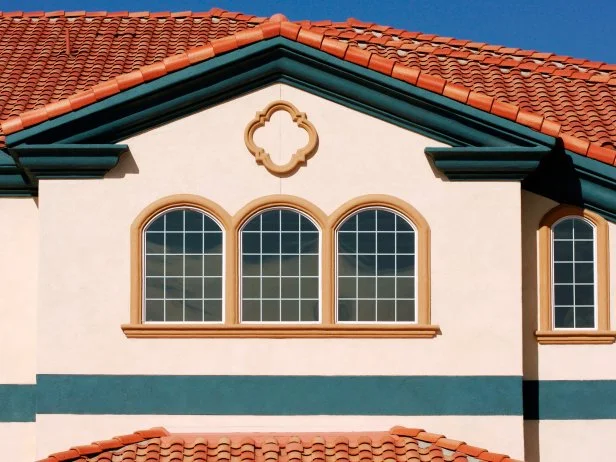
Stucco
This traditional siding is a mixture of sand, Portland cement, lime and water. Contractors attach a metal wire lath first, which the stucco grabs onto as it dries, to provide structure. Stucco is finished a few ways on-site, depending on the desired look.
Pros: With a core of cement and sand, stucco resists fire and insects. It accepts paint easily, and, with correct installation, it can be a very durable surface. Because it’s one monolithic coating with few seams, water has fewer gaps to infiltrate. Stucco has a natural light gray or white color if left unpainted.
Cons: Finding a stucco contractor can be difficult as the aesthetic is somewhat regional and most popular in hot and dry climates. Without proper installation, it can often crack (though minor damage is easy to repair). Stucco can absorb moisture and become a host for mold. Dust and dirt can also settle into the textured nooks and crannies, so keeping it clean is a big part of the maintenance.
House styles: Stucco is a classic look commonly found on Mediterranean, ranch and Spanish-mission exteriors. There are typically a few textures you’ll find. Sand, where the aggregate is exposed, is the most common finish. Smooth stucco is worked until it creates a uniform texture over the entire house. A California finish blends the other two styles with swaths of smooth stucco mixed with areas of more texture. With Spanish-style architecture, the stucco is often left unpainted.
Cost and lifespan: The prices range from $7-$10 per square foot. Properly-applied stucco can last 50 years or more when cracks are addressed.

Gordon Gregory Photography
Stone and Stone Veneer
The natural beauty and durability of stones, like granite and limestone, appeal to homeowners who want a siding that adds texture and visual interest to their exteriors.
Pros: Like brick, stone is among the most durable siding options on the market. In most applications, it’s either a veneer of full-thickness stone or, increasingly, sawn rocks with a flat backside that speed up installation. Stone won’t rot and will survive fire and insects. The thin stone veneer category includes both real stone and manufactured, cement-based stone.
Cons: Finding a contractor to install full-thickness stone veneer can be challenging, depending on where you live. Aside from cost and access to qualified installers, stone doesn’t have many drawbacks. Some siding contractors might only be accustomed to adding stone veneer siding.
House styles: Stone is commonly found on Colonial and English cottage exteriors, providing a beautiful look. It’s become common to add a thin stone veneer as a decorative accent, highlighting some architectural features on a house, like the entryway, or dressing up a concrete foundation.
Cost and lifespan: The prices range from $7-$30 per square foot. Stone can have warranties of 50 years to a lifetime.
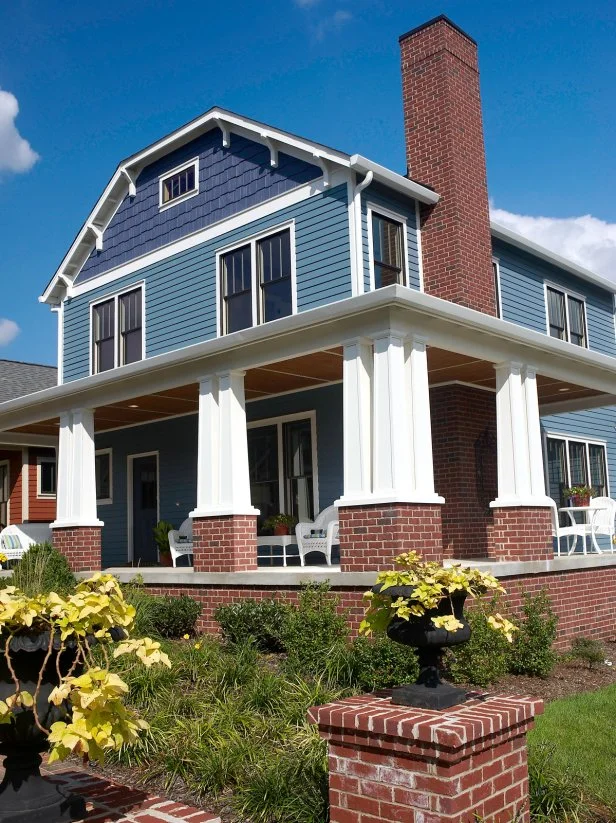
Louisiana Pacific
Engineered Wood
Pressed into shingles and clapboards, this mix of wood flakes and resin is popular for traditional homes where cedar or redwood are too expensive and pine might not last long enough.
Pros: Engineered wood comes from the factory in long lengths (about 16 feet) and primed, which speeds up installation and reduces the number of butt joints. The siding is usually found as the traditional claps and shakes along with vertical siding. Borates and wax are often used during manufacturing so engineered wood can resist insect and water damage better than natural wood. Engineered wood is also available in a range of products — from window trim to fascia boards — that can complete the installation.
Cons: It's not as environmentally friendly as real wood, and poorer grades of the material look less authentic than the real deal. Engineered wood can often be installed incorrectly by less experienced siding contractors, which can lead to cracking down the line.
House styles: As it’s designed to mimic classic wood siding, engineered wood fits the same assortment of traditional and Colonial-style architecture.
Cost and lifespan: The prices range from $2-$7 per square foot. Depending on the manufacturer, engineered wood can have a warranty of 30 to 50 years.

Ken Gutmaker
Metal
Metal siding can seem most appropriate on commercial buildings or very modern homes, but metal siding options can last decades in some of the harshest conditions like fire-prone areas. It was a popular siding option during the post-war housing boom.
Pros: From steel to aluminum, metal siding is durable and, like stone and brick, is impervious to pests and it won’t absorb water. It also won't ignite in a fire. While you can’t stain the metal clapboards, they are easy to paint and are relatively simple to keep clean. The material is also recyclable at the end of its life. The price for lifespan is high with metal, with only a handful of more expensive materials like brick and stone, lasting as long.
Cons: While it won’t burn, aluminum will buckle and deform in intense heat. There may not be as many color options for metal siding compared to vinyl. It requires a good insulation layer behind it to avoid conducting heat out of your home in the winter. If you have kids, their errant baseballs and basketballs can dent metal siding.
House styles: As it’s designed to replicate wood clapboards, metal siding also suits traditional and Colonial-style architecture.
Cost and lifespan: The prices range from $3-$6 per square foot. Depending on the manufacturer, aluminum siding can have a warranty of up to 50 years.
Frequently Asked Questions
-
How do you know it’s time for new siding?
If the siding is damaged from a storm or fire, it can be more cost-effective to re-side than patch the existing material. Siding doesn’t typically fail on a wide scale the way a roof might, but you might still want to consider taking the project on to refresh the look of the house, are undergoing a sizable renovation, or if you’re replacing a lot of windows and doors on your home.
-
How to choose the best siding?
While there are over a dozen different siding materials you can choose from, the field narrows pretty quickly when you understand your budget and what is typically installed in your area. You might love the look of stucco, but it might be difficult to find a qualified contractor in the midwest or northeast. Budgets can often eliminate more expensive materials like stone, brick and wood. Another important element to consider is maintenance: how does the siding clean up, how often would it require scrubbing, and can the material be repainted? It’s helpful to visit a showroom that has the siding material you’re considering on display so you can see it in person and touch it.
-
How to find a good installer?
Online referral websites can be a good place to start when looking for a siding contractor, but ask friends and family who’ve recently had the work done for recommendations — especially if their project required the same material you want to use. This is especially important if you’re switching siding materials. For example, if you’re replacing asbestos with wood or vinyl, because a good contractor will know how to deal with your existing material. Most siding contractors are clear about the materials they’re familiar with installing, and you should always ask for references of recently completed jobs in your neighborhood.
The basics of hiring any contractor are also important here. Work with those who are licensed and insured, and check that both are valid. A siding bid is typically one number that includes the cost of materials and labor, but ask your contractor what percentage of the number represents each and how many square feet your house needs. This can help you research the price of materials online to get an understanding of what you’re being charged for labor. Along with the warranty of the siding, you’ll want to understand the contractor’s warranty on the labor and how to get in touch with them should you need to put in a claim. Understand the length of the warranty issued by the manufacturer and what is and is not covered. Pay attention to the prorated amounts of repairs and if the warranty is transferable.







